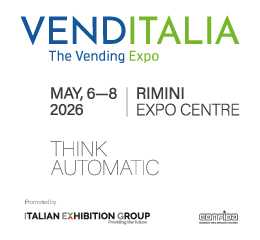Share your coffee stories with us by writing to info@comunicaffe.com.
by Liz Clayton*
NEW YORK – Now that coffee prepared at a high level, and with a high price tag, has saturated every city from Brisbane to Buffalo, the tropes of its evolving drinking culture have trickled into the culinary mainstream. Today, coffee connoisseurs run rampant through our streets, ordering flat whites and throwing around inside terminology like they’ve been checking roast dates since time immemorial. They know exactly the sort of coffee shop that sells these flat whites and fresh-roasted beans, the kind that some might refer to as “third wave.”
Rising popularity has undoubtedly been a good thing for whatever you prefer to call a coffee moment which, at its most idealistic, can be defined by a commitment to improve both socioeconomic and environmental conditions, all the way back down the supply chain. But do we have to call it “third wave” in food writing or otherwise? Does that mean anything to anyone anymore? And what does the layperson or coffee-curious journalist mean by it, anyway?
In food and beverage coverage, the biggest of the offenders in this regard, is the term “third wave,” most frequently prefaced by “so-called.” Could there be a bigger tell that the users of the word have no idea what they’re actually saying?
… coffee connoisseurs run rampant … ordering flat whites and throwing around inside terminology like they’ve been checking roast dates since time immemorial.
The first, and simplest problem with the way we use “third wave” is that its meaning has changed. This is an understandable effect of language’s evolution, and also the evolution of what was once a tiny segment of the coffee industry, which has dramatically expanded in the last decade. When coffee roaster Trish Rothgeb, now of San Francisco’s Wrecking Ball Coffee Roasters, coined the term “third wave” in 2002, she meant it to define a specific shift in service and customer engagement—one that differed from the somewhat detached barista experience of, say, my late 1990s visits to Espresso Royale Caffe.
Naming this shift “was only to express something I saw happening around me,” explains Rothgeb. “It should be said that this idea was meant for the consideration of the industry, really,” she continues. “It was for back of the house to use as shorthand for the shift in the way the consumer engages with specialty.”
“Specialty,” on the other hand, was an already-defined term within the professional coffee world. Specialty grade beans are named such scoring more than 80 points out of 100 on an industry-standardized scale; how they’re presented for sale or preparation is a metric completely independent of that. As the descriptor “third wave” took hold in the years following the article in which Rothgeb first conceived it, “it became a term to dissect, or dismantle, or debunk entirely,” she says.
The first, and simplest problem with the way we use “third wave” is that its meaning has changed.
Within the industry, “third wave” has retained the essence of its meaning—which is more philosophical than aesthetic, i.e. it addresses a wholistic, farm-to-craft-presentation approach to coffee that customers typically find evident once they reach a cafe counter. But as the term has gained legs in the mainstream, it’s gotten mixed with the notions of higher quality coffee, pedantic baristas, cafe spaces with bright white sanitary tile and repurposed barn-wood, and a desperate-sounding “we’re just as interesting as wine!” plea for coffee to be taken seriously.
In 2013, late food writer Josh Ozersky explained “third wave” coffee as a movement which defines itself as “being to Starbucks what Starbucks was to Folgers.” Using these merging criteria, I am no longer sure what is meant when someone tells me a coffee company is “third wave,” other than that it apparently thinks it is better than other coffee companies.
Great. I just want my cup of filter please. Off the big brewer behind you. Now.
The term as it has come into common parlance erodes the mainstream’s ability to take it seriously: For those who use it as an aesthetic shorthand for a cafe that uses Mahlkönig EK43 grinders and pulls shots of Scandinavian-influenced light-roast espresso where the barista knows the whole story of the coffee’s appellation and the name of the farmer’s kids, it reduces everyone’s ability to take the coffee movement seriously. Any kind of cafe can actually do this, serving any kind of coffee. It doesn’t mean the place is good, or progressive, or that the coffee is going to be made well.
That’s never what “third wave” was meant to mean. But now calling something “third wave” is a snob’s way of saying it’s good enough for them, and better than yours.
… now calling something “third wave” is a snob’s way of saying it’s good enough for them, and better than yours.
“I’d just say that it’s unfortunate that people want to take all the stuff they hate about new trends in coffee and make that the definition of ‘third wave,’” says Rothgeb. “I also had to put up with a lot of criticism as if I was the person that created ‘third wave’ and all its annoying manifestations.”
This all leads me to the second, realer problem with the term’s ambiguity. For coffee to be taken seriously on a culinary level—and yes, its nuanced tastes and its stories can be as interesting to consider as cheese, wine, or chocolate—ultimately, trying to use the “third wave” shorthand is more than insufficient, and it’s taking people backwards from the point of the actual movement to begin with (i.e. to help gain quality coffee a more thought-out foothold in consumers’ palates and decisions). Coffee elites say they want their beverage to be taken as seriously as wine or food, but when was the last time the beverage or restaurant industry embraced a shorthand term for “that place where they actually care about how the food is grown and served.” No one in the restaurant industry would ever say that because it’s supposed to be obvious. The way “third wave” has come to be used by most these days is not just snooty, it’s reductive.
Let’s keep seeking out those delicious, consciously sourced, fairly priced, well prepared cups of coffee—but let’s stop encouraging its drinkers and those who celebrate it in writing to narrow down a bunch of interior decorating aesthetics to the signifiers of why coffee is good. Coffee, and the people who talk about the things we eat and drink, are so much more complex than that.















